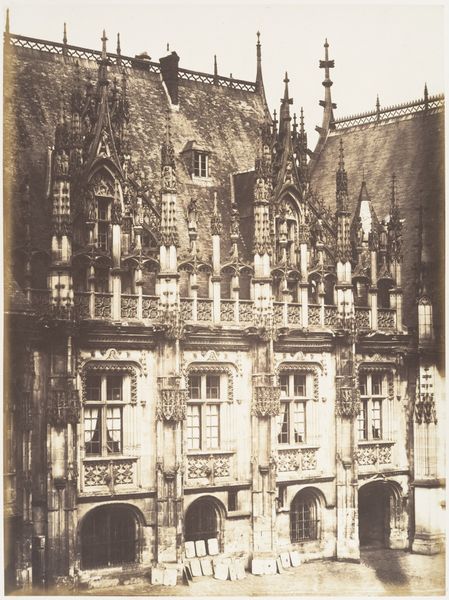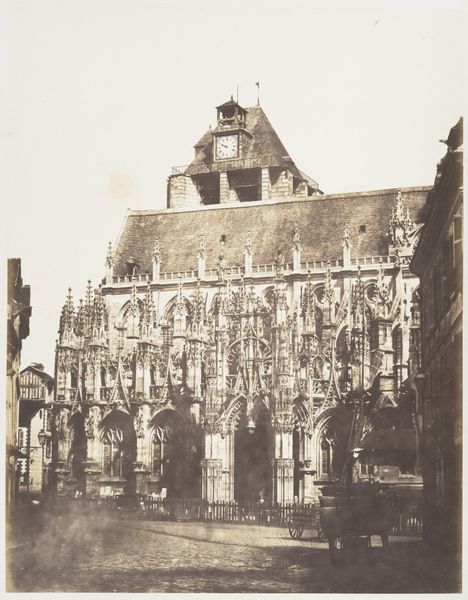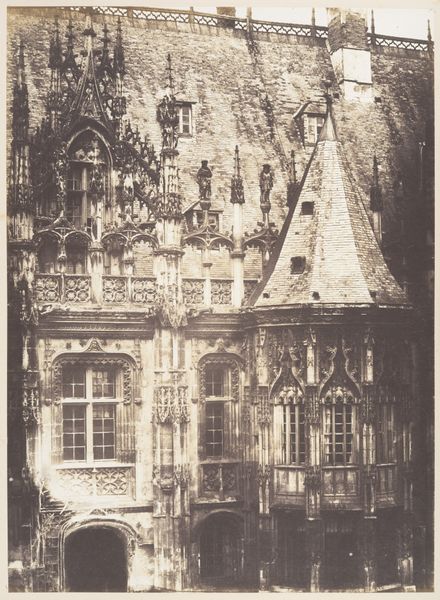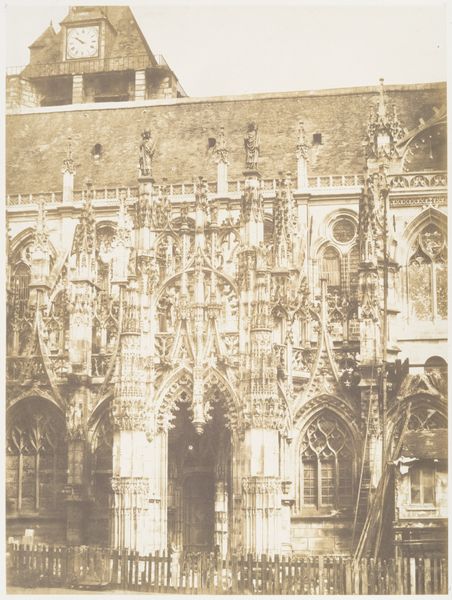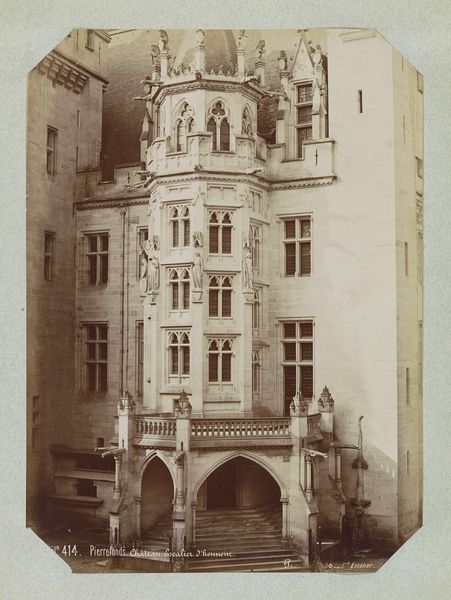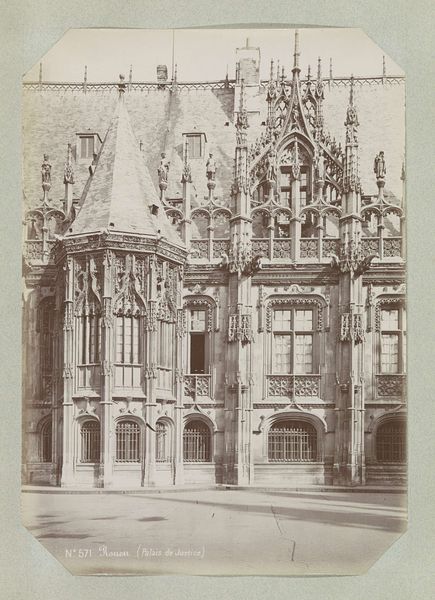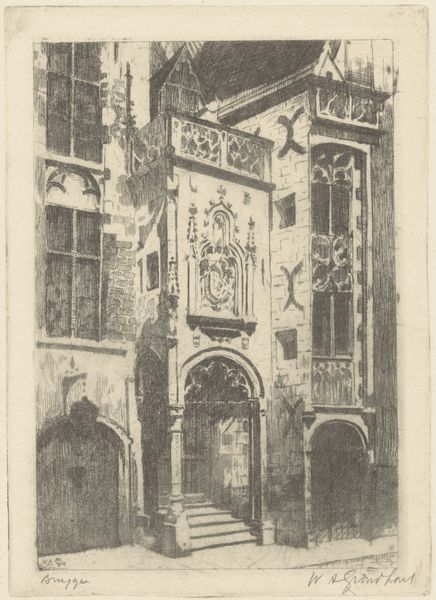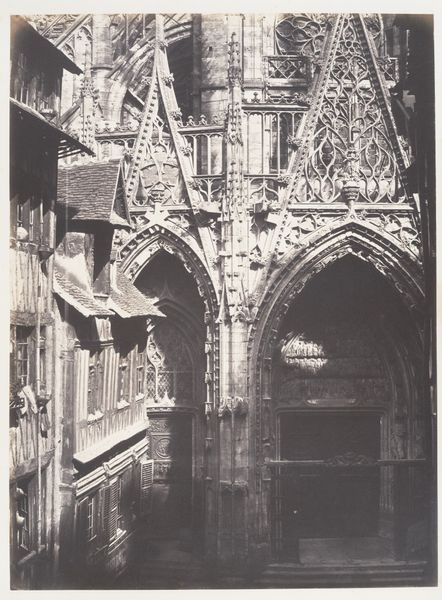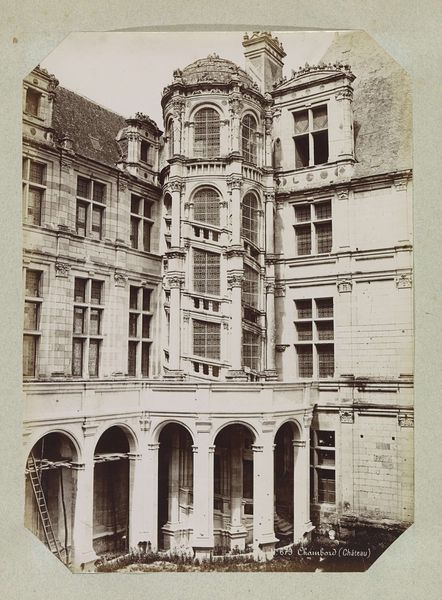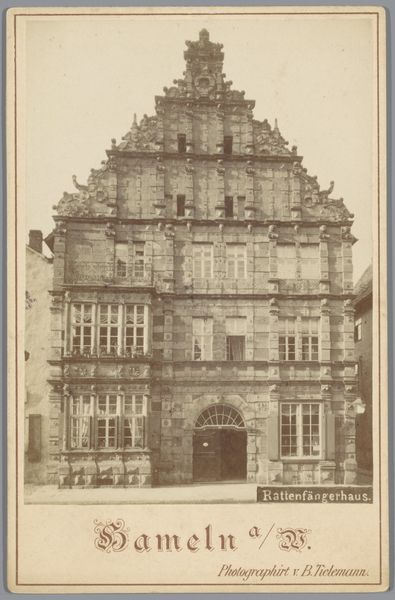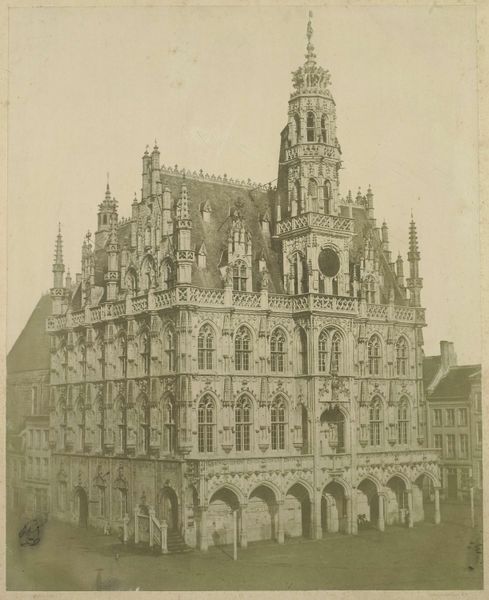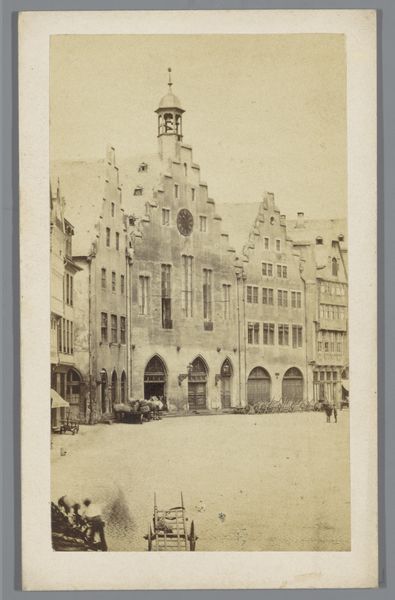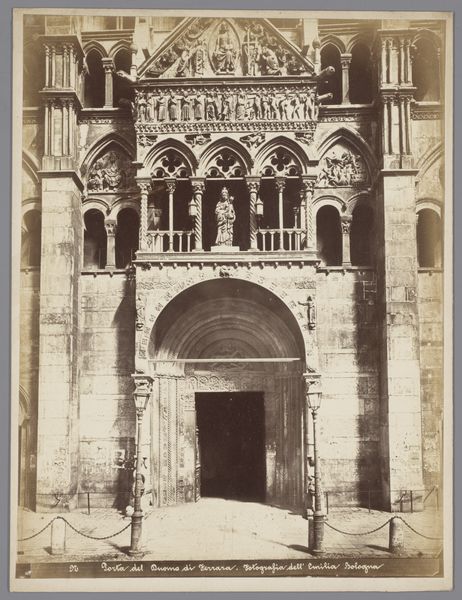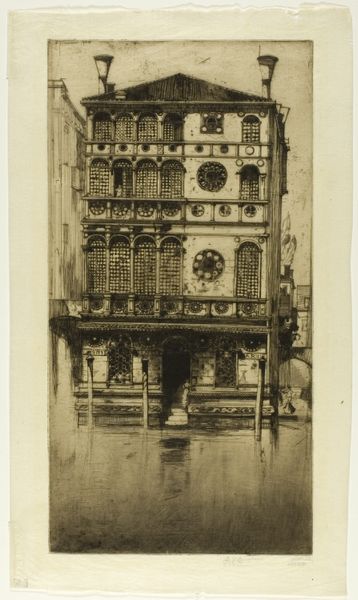
daguerreotype, photography, architecture
#
medieval
#
landscape
#
daguerreotype
#
traditional architecture
#
photography
#
historical photography
#
architecture
Dimensions: 34.8 x 25.8 cm (13 11/16 x 10 3/16 in. )
Copyright: Public Domain
Curator: My first impression? It feels like stepping into a forgotten chapter of a storybook, all shadows and whispers. It’s somehow both imposing and delicately fragile. Editor: Indeed! We are looking at "Tourelle du Palais de Justice, Rouen," a daguerreotype made between 1852 and 1854 by Edmond Bacot. This image captures a detail of the Rouen courthouse and its glorious Medieval style. What intrigues me here is how the emergence of photography in the mid-19th century captured not just the world but the public fascination with medieval aesthetics. Curator: Medievalism… that yearning for a romanticized past. You know, I can almost smell the stone in this image—that damp, mossy scent that comes with centuries of stories etched into a building. The gothic details are rendered so precisely that the whole image feels dreamlike. It makes you think about the lives that unfolded within those walls. Editor: Absolutely. And this precision is achieved through the daguerreotype, an early photographic process which yielded incredibly detailed, one-of-a-kind images on a silvered copper plate. The ascendance of photographic techniques coincided with debates about architectural preservation and restoration. Photography played a vital role in documenting historical sites. The Rouen courthouse exemplifies the visual power photography quickly gained. Curator: It’s funny how a supposedly objective medium like photography can still be so emotionally charged. I find it hard to look at this image and not be moved. It’s more than just a record; it’s a testament to the endurance of human artistry and our desire to preserve moments in time. Perhaps even manufacture a little bit of time travel, which, let's face it, we could all use these days. Editor: That yearning to connect with the past you’re mentioning—photography facilitated its democratization, in some sense. Though the earliest forms of photography were difficult and expensive, they ultimately offered wider access to architectural marvels previously known only through travel or engravings. Curator: I think that’s wonderfully put. Thank you, as ever. Editor: It was my pleasure. Let us step back into our present moment now.
Comments
No comments
Be the first to comment and join the conversation on the ultimate creative platform.
